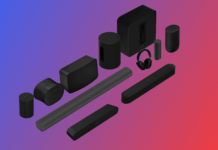Antec is a major player on both the case and power supply market. It has presented some of the most innovative solutions we’ve ever had the pleasure of reviewing. We got a chance to speak with senior VP Scott Richards and ask him some questions about the future.
We would be quite surprised if you haven’t heard of Antec. The company that has been making computer components since 1986 has a reputation of making high-quality products and has become very popular among consumers looking for that little extra. Antec chassis and power supplies have been with us for some time now and over the last couple of years, Antec has managed to stand out even more through innovative products and fresh thinking.
The DIY (Do-It-Yourself) market has literally exploded and Antec is one of the companies has gained the most from this. Its cases, power supplies and peripheral components have been showered with praise from editors and the community, not the least the Performance One case series.
We’ve been given the opportunity to chat with Antec Senior Vice President Scott Richards. He recently visited Sweden and here today we present you with this interview that took place a while back.
We’re here with Scott Richards from Antec, perhaps best known for its award winning Performance One cases and long history of making quality power supplies.
 |
NordicHardware: Glad to have this opportunity to talk to you, could you perhaps give our readers a short introduction of yourself?
Scott Richards: Thank you for asking me. I’m glad to be here. I’m Antec’s Senior Vice President and I’ve been with the company for over 11 years. I’ve seen the company grow from a small company servicing North America only to the worldwide success it is today.
NH: The passive and semi-passive power supplies of the Phantom series seem to have gotten little attention lately. We were under the impression that people were screaming for totally silent power supplies?
SR: It was always a niche market. The Phantoms never amounted to more than 1% of our total power supply sales. Today’s active cooled power supplies are, in any event, very quiet and we’ll be introducing a line soon that will be our quietest ever. And, don’t forget, while power supply noise is important for total system quietness there are other culprits creating plenty of noise.
NH: Antec has been one of the strongest supporters of the 80 Plus Standard. We can’t imagine that it was a hard decision to support this standard, but have you had any complications when trying to actually achieve this kind of efficiency? Many manufacturers are still failing to do this, is there anything you can share about how you’ve been able to do this?
SR: First of all, we truly support the concept of efficient, environmentally friendly products and when you think of the global impact more efficient electronics can have, it really becomes a no-brainer. It’s not a coincidence that, even though 80 Plus had not been established at the time, our NeoHE series was launched with an environmental theme in the packaging.
For the technology, it’s primarily due to our willingness to use more expensive circuit topology. Use of Dual Forward and Active Clamp topologies, whereas previously we had been using full bridge or half bridge designs, made a big difference.
NH: It’s not that uncommon to find people with quite modest hardware with power supplies rated at more than twice what the computer actually consumes. How do you feel about the wattage hysteria and that some component manufacturers exaggerate their recommendations? Would you agree that it weakens the value of (good) power supplies?
SR: This is an issue that has many sides to it.
Yes, perhaps some consumers are spending a bit too much money buying power supplies that exceed their needs, but it is probably a very small percentage of their total system expenditure. They are not wasting power or efficiency (as long as they choose wisely overall), and it will insure that they have a long and happy experience with their power supply because it will not be under stress. Plus allow them to upgrade other components without considering a new power supply. We do have a power supply calculator on our website to assist consumers getting what they need.
As your question implies, it is true that a well made quality 300 Watt PSU is definitely better than a power supply that is cheaply made but claiming to be 500 Watts. Over the years we have seen many power supplies that were rated, say, 250 Watts, when the manufacturer applied for safety regulation but were sold as 400 Watt or whatever. And, still, many of our competitors rate their power supplies for maximum power rather than continuous power as we have always done. So let the buyer beware. One simple idea is to pick up the power supply, if a high powered unit is very light, it is likely not truly able to perform as claimed.
Lastly, as a company that has always strived to make the best quality possible for the money invested, it does drive us at Antec a bit crazy when we see consumers run their power supply right on the line of available power. The excess heat and having components running constantly on the ragged edge can inhibit overall performance and substantially shorten the life span of the PSU. And, naturally, regardless of the fact that they have mismatched the PSU and their requirements, when it fails it is still our “fault” and we are responsible for warranty replacements.
NH: Antec has an upcoming series of power supplies coming up that you seem to be very excited about. Is there anything you can tell us about it today?
We will officially announce the Signature Series at CES in January. The first two models will be a 650 and 850 Watt units. This series will have several new innovations to make it stable and quiet and will be designed and built to the highest standards. Innovations will include use of DC to DC voltage regulation modules for the step down voltages, PWM fan controller and much else.
NH: What are you thoughts on the future development of power supplies? Will we see even more wattage or has the trend stagnated? Will there perhaps be a 90 Plus standard, or are we wishing for too much?
SR: As long as the GPU companies keep pushing for more power and, of course, the CPU’s are ramping up again with quad core and other technologies, plus the increased demand for storage, servers, etc, in the digital media age, I don’t see the demands for power going down. But I’m sure you will see more specialization, so there will also be power sipping PC’s out there as well as power hungry models.
The drive for more efficient PSU’s will also definitely continue. We’ll get there in incremental steps. 90% is still sometime away. Let’s get to 85% first.
NH: Moving on to the cases, the Performance One series seems to have been a huge success as it has been constantly showered with praise and awards by editors (including myself). We have to ask what the next step will be? Will there be any more models similar to those we have today, or should we perhaps expect something completely new?
SR: We still have some good life left in the P180 series, so you will likely see one more updated version of that before a completely new case in this series, probably late next year.
[Editor’s note: Antec unviled the Antec Performance One P182 Mini at CES.]
NH: Beside the Performance One series, the Gamer series and the Sonata series seems to be the most popular among consumers. If we stick to the Gamer series for now, is there anything you can tell us about the upcoming Twelve Hundred model?
SR: There will be two new models in the Gamer series, the Twelve Hundred, which is essentially an expanded version of the Nine Hundred with 12 bays, more cooling and air filters. We will also have a Three Hundred, which will have three external drive bays and six internal. The Three Hundred will have excellent style and performance at a price that will be quite attractive. We expect both budget minded gamers and system builders to be interested in the case.
NH: Antec hasn’t released any full tower case in a long while now, is this a market that is about to disappear, or will we perhaps see some new blood to compete with cases like CoolerMaster Stacker or Thermaltake Armor?
SR: Cooler who? Thermal what?
Joking aside, I think we have a very competitive range of chassis. Our Twelve Hundred will be very close to these models with the exception of supporting extended ATX motherboards. And in many ways we think it will be better.
We listen very closely to our customers. The president of our company and myself are cc’d on several email boxes in which customers send suggestions, requests and complaints. So we get direct feedback from them, not what someone else in the company wants us to hear. And, honestly, I have not seen a lot of requests for that style of case.
NH: Antec recently launched the Veris series, and while the market for HTPC cases in North America is rather cool, the HTPC concept is quite established here in Europe, and especially here in the Nordics. It’s a fairly small market, but it’s definitely growing steadily. Do you have any plans to expand your assortment of HTPC cases anytime soon? Perhaps a new micro-ATX or even mini-ITX case?
SR: The answer to all those questions is “yes”. The Fusion Max will be the new HTPC introduced at CES and shipping in the first quarter. The others will follow.
NH: What’s your take on the power efficiency of current computer components? Intel processors took a big step in the right direction with the Core architecture, but current high-end graphics cards are quite the power hogs.
SR: Yes, CPU’s have been getting smarter when it comes to power efficiency and consumption. The GPU guys will need to learn from that to find ways to meet the demands of both ever-increasing graphic realism and demands for greener computing. I’m sure that they realize that and are working on it.
NH: Antec is foremost a case and power supply company, but you also have quite a lot of cooling products, but, unlike some of your competitors, you offer rather few processor coolers. Is this perhaps a market you have been considering?
SR: It is a market we watch. We supply coolers primarily now for the retail replacement market, not the high-end, high performance market. Here it is just a matter of when we have something unique to offer this market we will. We see no real need to make a “me too” sort of offering. And, of course, there are economies of scale we need to work with. Given our position in the market we need to sell thousands or tens of thousands where our competitors have a much lower need in that regard.
NH: Thank you for your time!
SR: Thank you for having me. It’s my pleasure. And I’d like to thank all of our customers and supporters in the Nordic countries. Our success in these markets has really helped Antec’s overall European and worldwide strategy succeed.





















